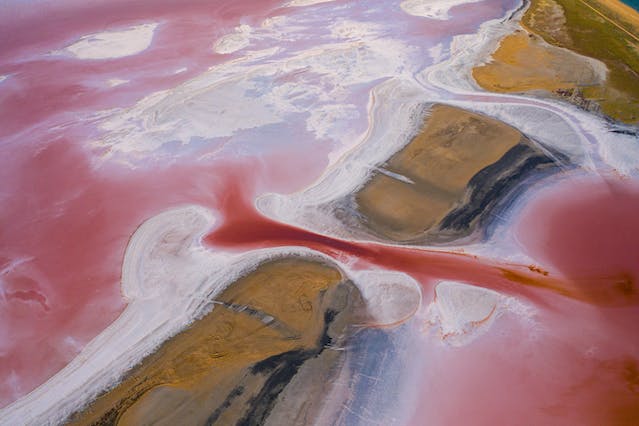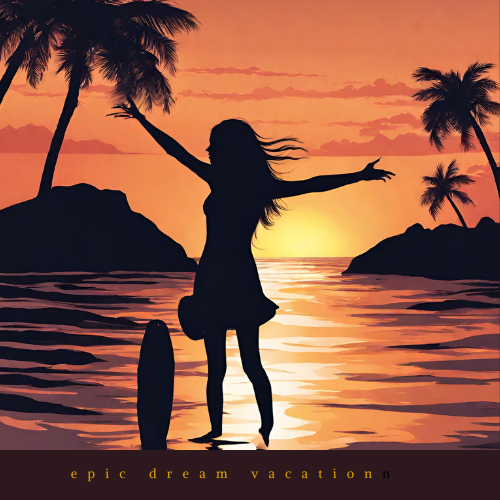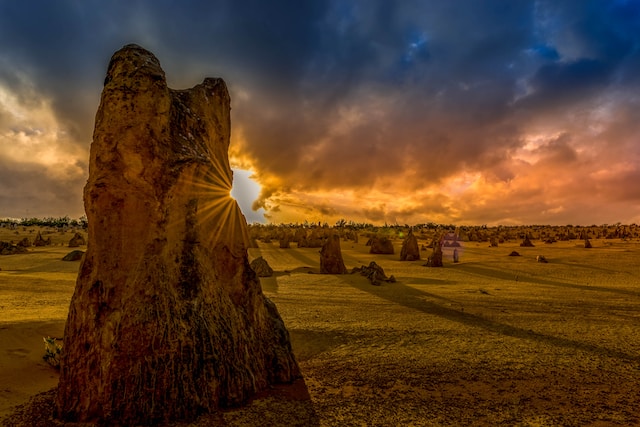Australia is famous for its natural beauty with Uluru and the Great Barrier Reef among its top attractions. But among the strangest natural wonders of Australia are surreal formations that you cannot find anywhere else.
Each of these formations has its own unique story and allure. Like all other natural attractions, they showcase the diversity of this beautiful continent. But they go a step further, piquing our sense of wonder as they seem to break every rule in nature’s books.
If you love the unusual, here are the best places to visit in Australia:
Bioluminescent Plankton, Tasmania, Jervis Bay, South Australia

Have you come across a water body that naturally glows in the dark? Jervis Bay of the few places on earth where you can see this incredible phenomenon. During the day, it is a paradise for beach lovers with sparkling white sands and beautiful marine creatures. When the sun goes down, it turns into one of the strangest natural wonders of Australia. The waves of the sea sparkle as they crash against the shore create a vivid, blue light show.
The phenomenon is linked to a chemical reaction in plankton present in these waters. They use this tactic either to attract prey, lure mates or to confuse predators. Like many other natural occurrences, it is hard to predict when exactly the next show will be. The temperature and wind conditions have to be just right. But when you get to see it, every effort will be worthwhile.
Among the best spots on Jervis Bay to see the light show are Barfluer Beach and Bleinheim Beach. Other areas of the country where you might chance upon it include Tasmania and South Australia. Follow the hashtags on social media to know when it’s happening.
Bungle Bungle Range, Purnululu National Park
Purnululu National Park is home to a group of rock formations spotting black and orange stripes. Known as the Bungle Bungle Range, these fascinating domes are a relatively recent discovery. They hit the limelight in the 1980’s, going on to become a UNESCO World Heritage Site.
The range consists of karst formations in sandstone domes that rise to a height of about 300 meters (984ft). It is a unique and dramatic landscape covering a vast area of close to 240,000 hectares. Within it, there are plenty of hidden gems including seasonal waterfalls, deep gorges and breathtaking chasms. You might also come across rare native animals like the short-eared rock wallaby.
According to geologists, the landscape derives its colors from a blend of influences. Iron and manganese color the red-orange bands while the black stripes are remnants of old living organisms. Volcanic activity, rain, wind and erosion are responsible for the curious conical shapes. UNESCO claims that in terms of diversity, grandeur and scale, there is nothing like them in the entire world.
Champagne Pools, Fraser Island, Queensland
Among the strangest natural wonders of Australia are the aptly named Champagne Pools on K’gari. If you love to swim in the ocean but cannot stand the crashing waves, these are the perfect spot. They consist of small pools in the ocean with rocks forming a protective wall around them. The water in these pools is warm and it bubbles – hence the name. It is nature’s best example of a giant jacuzzi.
This beautiful formation is the product of volcanic rock erosion and is a great secluded spot for beach lovers. Getting there is a challenge so it is a bit off-the-beaten-path. While you are here, keep an eye out for humpback whales, manta rays, dolphins and turtles.
Lake Eyre (Kati Thanda-Lake Eyre), South Australia

On the lowest point in Australia sits yet another bizarre wonder of nature, Lake Eyre. It is among the largest saltwater lakes on earth, situated 15 meters below sea level. Water only flows into it but does not flow out. The weirdest thing about it, is that it only fills up with water a few times every century. In the past 100 years, it has only filled up four times.
The Lake Eyre basin spans an impressive 1.2 million square kilometers (0.75 million square miles). But the lake only accounts for 9,700 square kilometers (5,846 square miles). Due to the high salinity level, it leaves behind a vast salt crust when water evaporates. This forms a mesmerizing landscape that seems out of this world.
When it fills up, a variety of plankton hatch from eggs on the lake floor. These attract thousands of waterbirds to feed and breed along the shores. Most recently, it filled up in 2019 and the algae population transformed it into a vibrant spectrum of colours. It was a beautiful wash of rose pink, white, red, yellow and blue. Beyond the lake are vast landscapes of mesas and red sand dunes rising from salt pans.
Mount Augustus (Burringurrah), Western Australia
One of the strangest natural wonders of Australia is a paradise for mountain adventure lovers and rock climbers. At 2.5 times the size of Uluru, it is the biggest rock in the world. (Uluru is the largest single-rock monolith worldwide, but Mount Augustus consists of multiple rock types.) Mount Augustus rises to a height of 716 meters (2,350ft) and has an 8-kilometer-long (5 miles) central ridge.
Besides its incredible size, Mount Augustus is also strange in that it changes colours at different times of day. At dawn and dusk, it shifts from bright pink or purple to red, orange or even green. It also has beautiful Aboriginal rock art sites hidden, caves and gorges to explore.
Lake Hillier, Middle Island, Western Australia
There are a number of pink lakes in Australia. However, Lake Hillier stands out among them because it is also the only pink lake situated on an island. Even though it sits just a short way from the Pacific Ocean, it does not drain into the sea. The contrast between the turquoise waters of the sea and the pink of this strange lake is simply stunning. It also has the unique shape of a giant foot print – best viewed on an aerial adventure.
It is possible that the lake derives the unique color from the presence of a micro-algae species known as Dunaliella Salina. These salt-loving algae thrive in extreme salinity – Lake Hillier is nearly eight times as salty as the ocean. The same microorganism is likely responsible for the pink colour in Lake Retba, Senegal. Lake Retba is among the weirdest waters of Africa because of its high salinity and unique color, just like Lake Hillier.
The Blowholes, Torndirrup National Park, Western Australia
Among the strangest natural wonders of Australia are the blow holes in Albany’s Torndirrup National Park. Strong ocean swells force water through sea caves along the shoreline. Due to high pressure, the water jets out through holes in the cave walls. Sometimes, these jets shoot up to heights of 20 meters (65.6ft).
There are crevasses in the granite rocks over a considerable distance along the beach. You can therefore enjoy great views of the natural fountains right across the lagoon. For the most spectacular sight, visit when the tides are surging in but before high tide. During high tide, the holes in the rocks are completely submerged.
While at Torndirrup National Park, check out the Gap, an intriguing channel with granite walls. The Southern Sea is responsible for carving out this masterpiece which boasts a sheer drop of about 25 meters (82ft). Another nearby granite formation is the Natural Bridge. Here the same ocean has eaten through rock to create the fascinating attraction.
The Lost City, Litchfield National Park
If you love archaeological ruins, you will be happy to know that nature does too. In fact, right in the heart of Litchfield National Park is a collection of rock formations resembling an ancient ruin. It consists of towering sandstone pillars in various shapes and sizes. They spread over an area large enough to be a small town; but even though they appear man-made, it is all natural.
Seeing as this spot is so hard to access, even for 4WD vehicles, you might have the entire wonderland to yourself. Notably too, the journey there is an adventure through pristine landscapes with scenic waterways, enchanting falls and woodlands.
Savour the Marvels of Bizarre Landscapes in the Strangest Natural Wonders of Australia

These are some of the strangest natural wonders of Australia. Some are in fact so unusual that they have gained international acclaim. They offer a unique opportunity to explore the beauty of this continental country from a completely different perspective. And the best part is that each of these masterpieces is a living work of art, ever changing in tune with the forces of nature.
So, whether you come to Australia on a bleisure trip or on vacation, take a moment to savour the marvels of these bizarre landscapes.

